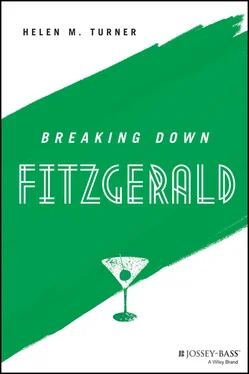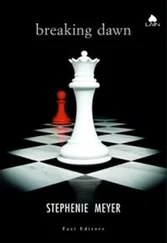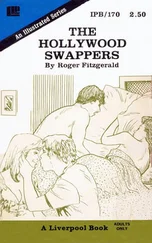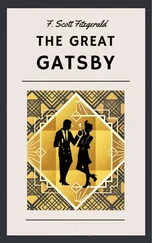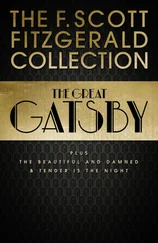Over the next few years, the Fitzgeralds lived at different locations in Paris and the South of France as well as periodic returns to the United States. Both Fitzgeralds were drinking heavily but for Scott the tightening grip of alcoholism was interfering with his productivity. He was in increasing amounts of debt with both Scribner's and Harold Ober despite still being paid considerable sums of money for his short stories. For example, in 1926 according to Fitzgerald's own ledger his income was $25,686.05 (Bruccoli 2002, p. 532). Key events during this period were the beginning of a new novel shortly after the publication of Gatsby that would not see completion until 1934; publication of the important short story “The Rich Boy” (1926); a Broadway production of The Great Gatsby also in 1926; and a stint in Hollywood as a screenwriter in the opening months of 1927. The return to the United States during 1927 and 1928 also marked the beginning of Zelda's serious study of dance that would continue for a number of years with some success.
As the 1920s gave way to the 1930s a tidal wave of disaster struck both Fitzgeralds. The Wall Street crash of October 1929 drew to a close the carefree spirit of the Jazz Age with financial, psychological, and emotional ramifications for many. The unprecedented downturn meant a shrinking of the lucrative magazine market and the amount of money publications were prepared to pay for short stories, which directly affected Fitzgerald's livelihood. Compounding his growing financial worries and alcoholism, Zelda's mental health began to rapidly deteriorate leading to a complete breakdown that required hospitalization in April 1930. She would be in and out of expensive sanitoriums in Switzerland until September 1931 when the couple returned to the United States. In between, Fitzgerald had briefly returned to the United States in January of that year to bury his father. Zelda would go through the same upset when her own father, Judge Anthony Sayre, died in November 1931, marking a hellish eighteen months for the pair. The couple seemed to reflect on a personal level the distress and the chaos of the United States as the 1920s came to an abrupt halt and the Great Depression engulfed everything in its wake.
TENDER IS THE NIGHT AND “THE CRACK‐UP” (1931–1937)
Fitzgerald had turned his attention to a new novel in the summer of 1925, mere weeks after the publication of Gatsby . More than five years later, the work remained unfinished. There were multiple drafts with multiple titles, a variety of plots that were amended and discarded, changes in focus and narrative voice during this period. Fitzgerald's inability to finish the novel was multifaceted. Financial anxiety weighed heavily upon him, which often led to him putting aside his novel to work on short stories that could pay the bills. Zelda's treatments and Scottie's education required a steady flow of income. Fitzgerald's alcoholism was also creating havoc in his personal and creative life as well as damaging his health and general well‐being. He was also unable to get a handle on his material. This, in part, was because of constant interruptions, but there were possibly other factors too such as subject matter that was not best suited to his style and a dread of failure after the disappointment of the reception of The Great Gatsby .
However, early in 1932, he turned his attention once again to the novel and began to draft what would eventually become Tender Is the Night (1934). As a writer who drew heavily on his own life for inspiration in his fiction, Fitzgerald reflected upon recent events and funneled aspects of them into the novel. His growing familiarity with psychiatry because of Zelda's illness was a rich source of material and his protagonist, Dick Diver, is a psychiatrist who ends up marrying one of his patients. The novel is—in many respects—a reflection on the importance of work and vocation. It also reflects on the distractions that destroy the dedication required to succeed. Once again, it is possible to see Fitzgerald's themes reflecting concerns in his own life.
In February 1932, Zelda's mental health declined once again. It was serious enough to warrant admittance to Johns Hopkins Hospital's Phipps Psychiatric Clinic in Baltimore. By the following month she had written a novel of her own titled, Save Me the Waltz (1932) and sent it to Max Perkins without any consultation with or mention of the work to Fitzgerald, who was mortified. Zelda had completed a full‐length piece of fiction in six weeks compared to his six years of labor for no return. Even more unnerving was that the material crossed over significantly with his own novel with which he was starting to make progress. A bitter marital rift ensued with accusations of sabotage and demands to cease writing on Scott's part and claims of jealousy and stealing of her own experiences for his benefit on Zelda's. The relationship was becoming increasingly strained because of Zelda's ill health, Scott's alcoholism, and the relentless pressures the pair were under in their daily lives. Despite Fitzgerald's reservations, the novel was published by Scribner's on October 7, 1932.
By this time, Zelda had been discharged from the hospital and the couple were living at “La Paix.” The house was on the estate of the Turnbull family and situated on the outskirts of Baltimore, Maryland. The Turnbull family's young son, Andrew, would be an early biographer of Fitzgerald's, publishing F. Scott Fitzgerald: A Biography in 1962. He also edited the first collection of the author's letters in 1963. During this time, Fitzgerald carried on working on his novel while Zelda turned her attention to writing a play called Scandalabra . It was produced by the Junior Vagabonds, a Baltimore‐based theater group and had a one‐week run in June 1933.
The final months of that year saw the beginning of Fitzgerald periodically checking himself into the hospital for a number of complaints. There were, of course, complications from alcohol but he also suffered from tuberculosis, the lung condition that had killed his beloved Keats.
By October, Fitzgerald was finally able to send Perkins the manuscript of his fourth novel, Tender Is the Night ; the title came from Keats's poem “Ode to a Nightingale” (1819). The novel was serialized between January and April of 1934 in Scribner's Magazine and the book was finally published on April 12 of that year. It was an astonishing nine years since Fitzgerald had published a novel. Unfortunately, reviews were once again mixed. One of the perceived problems was that the novel's focus on a wealthy and leisurely class whiling away the days on the French Riviera seemed out of kilter with an America that remained in the throes of the Great Depression. To put this in context, Tender Is the Night was published less than three years before John Steinbeck's Of Mice and Men (1937) and only five before The Grapes of Wrath (1939). Both books detail the depths of the despair brought about by the economic collapse on great swaths of the American population. Other concerns were structural; Fitzgerald had used an extended flashback in the middle section of the book, but some critics felt a chronological approach would have worked better. For others, there was also a sense of disjointedness because of the novel's lengthy composition and a feeling that Diver's demise was not fully explained. It is also worth noting that the anticipation after close to a decade of waiting almost guaranteed disappointment. Fitzgerald had his own reflections on the novel's perceived weaknesses when he wrote to Maxwell Perkins on March 11, 1935, almost a year after its publication:
A short story can be written on a bottle, but for a novel you need the mental speed that enables you to keep the whole pattern in your head and ruthlessly sacrifice the sideshows as Ernest did in A Farewell to Arms . If a mind is slowed up ever so little it lives in the individual part of a book rather than in a book as a whole; memory is dulled. I would give anything if I hadn't had to write Part III of Tender Is the Night entirely on stimulant. If I had one more crack at it cold sober I believe it might have made a great difference. (Fitzgerald 1994, pp. 277–278)
Читать дальше
